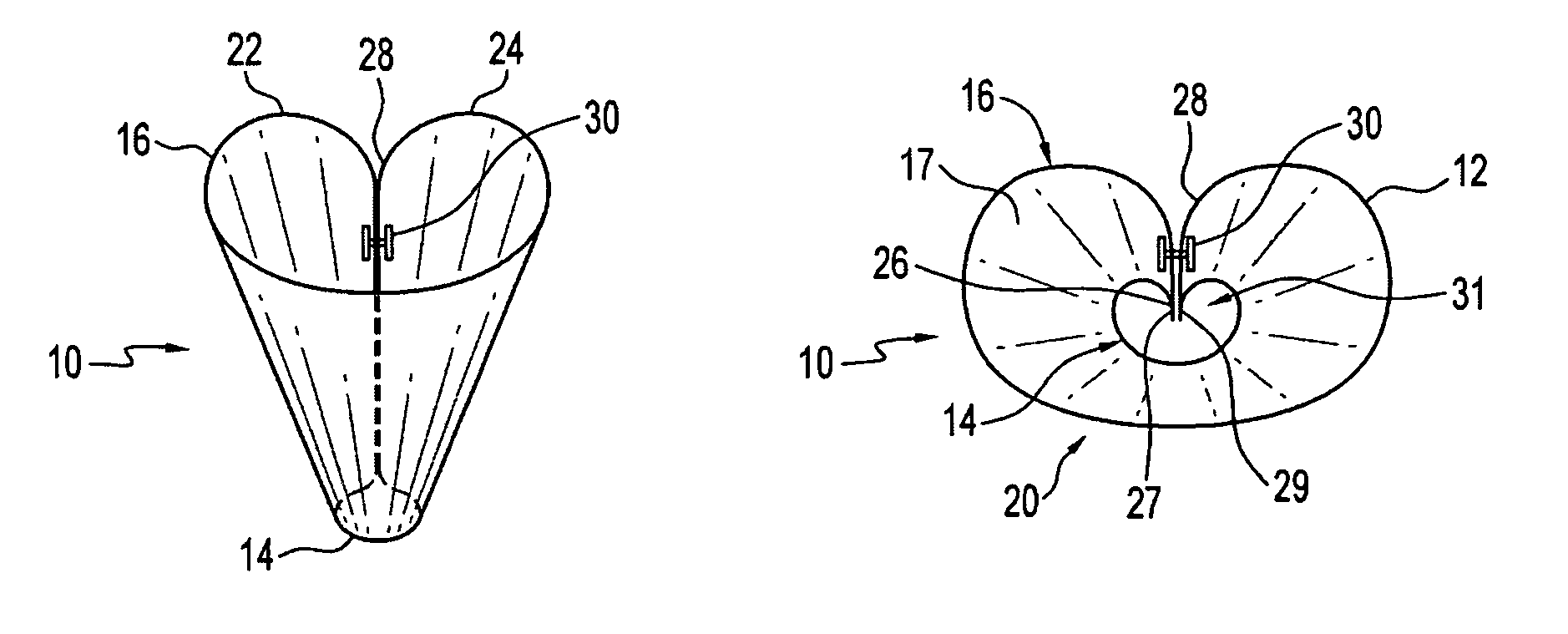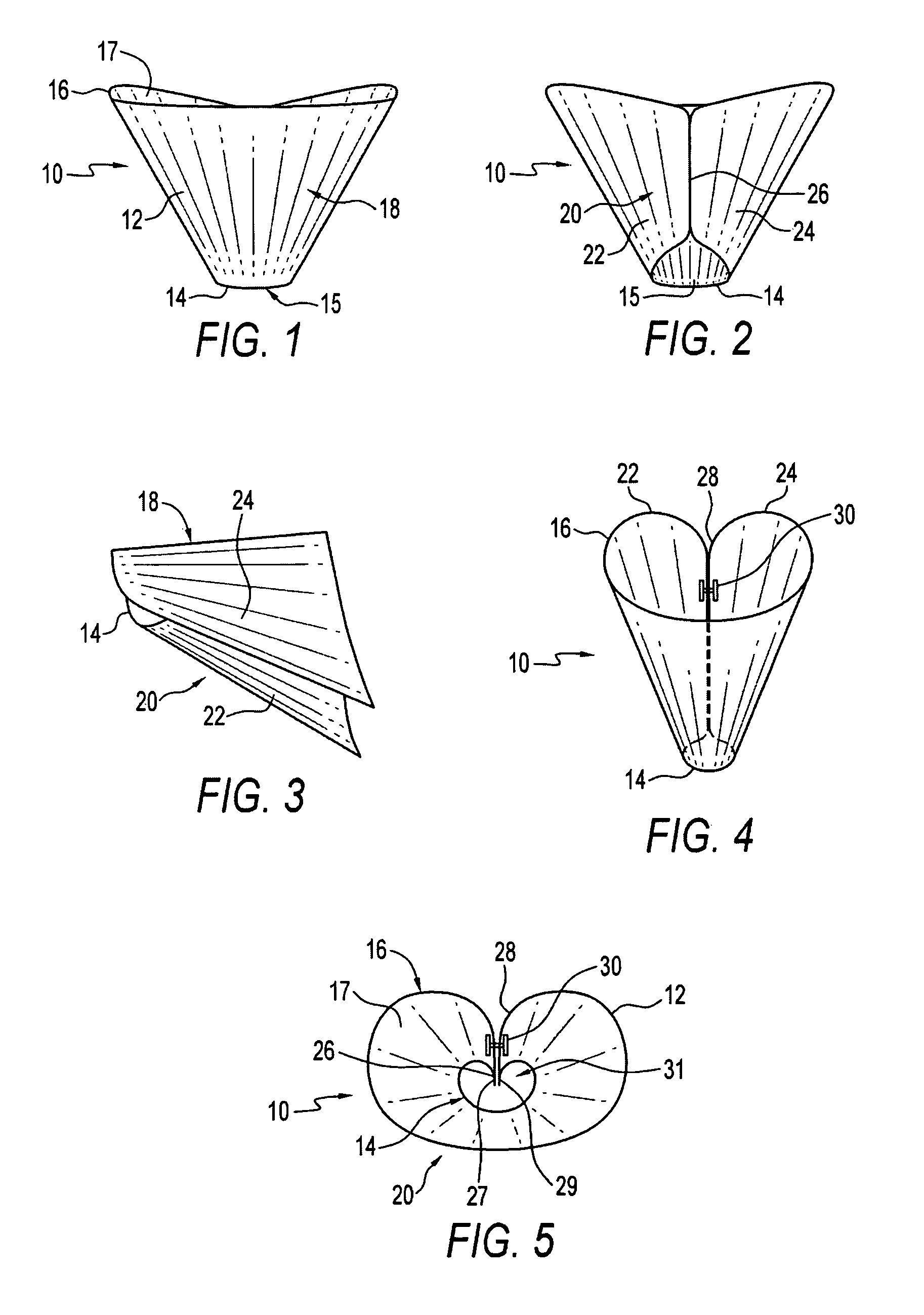Tie knot member
a tie knot and member technology, applied in the field of tie knot members, can solve the problems of not having immediate access to help, never becoming skilled at tying ties, and being extremely frustrating, and achieve the effect of eliminating frustration and avoiding embarrassmen
- Summary
- Abstract
- Description
- Claims
- Application Information
AI Technical Summary
Benefits of technology
Problems solved by technology
Method used
Image
Examples
Embodiment Construction
[0024]Referring to the drawings and first to FIG. 1, a tie knot member is illustrated as indicated by numeral 10. The tie knot member 10 also may be referred to as a cinching device. In this embodiment, the tie knot member 10 comprises a flexible member, in this case a shell 12 made of a flexible material. The shell 12 in this example is a resilient plastic although other materials could be used. The tie knot member 10 has a top end 16 with an upper aperture 17. The tie knot member has a base end 14 with a lower aperture 15. A front portion 18 extends between base end 14 and top end 16.
[0025]There is a rear portion 20 opposite the front portion 18, as illustrated in FIG. 2. The tie knot member 10 has cone members 22 and 24. Cone members 22 and 24 may be referred to as two truncated, partial cones, In this embodiment, the cone members abut adjacent to a slit 26. Each of the cone members is in the shape of a partial truncated cone, as best illustrated by FIGS. 3 and 4. The cone member...
PUM
 Login to View More
Login to View More Abstract
Description
Claims
Application Information
 Login to View More
Login to View More - R&D
- Intellectual Property
- Life Sciences
- Materials
- Tech Scout
- Unparalleled Data Quality
- Higher Quality Content
- 60% Fewer Hallucinations
Browse by: Latest US Patents, China's latest patents, Technical Efficacy Thesaurus, Application Domain, Technology Topic, Popular Technical Reports.
© 2025 PatSnap. All rights reserved.Legal|Privacy policy|Modern Slavery Act Transparency Statement|Sitemap|About US| Contact US: help@patsnap.com



